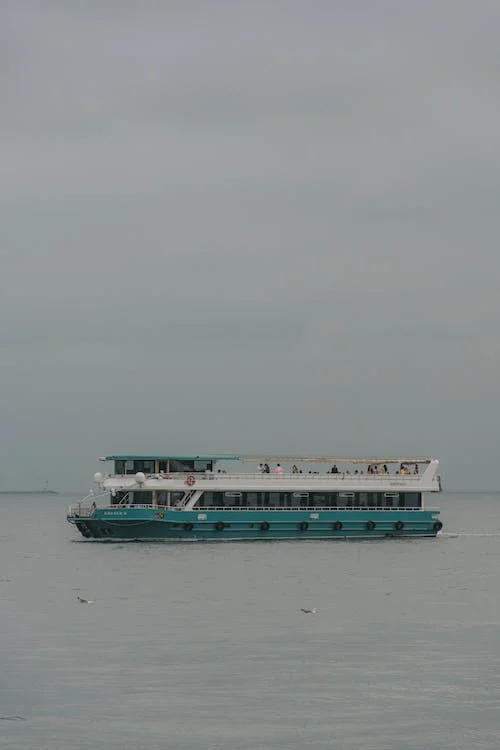Before there were trains, airplanes, and cars, boats were used for travel on rivers. These ships carried people and goods from one place to another. Traveling on the river is often very slow, as it depends on manpower, river currents, and the wind.
It all changed with the invention of steam-powered boats during the late 1700s. Steamboats rose to popularity since they could travel up to five miles per hour. Soon, it changed the course of river travel and trade. These steam-powered boats also played an important role in America’s westward expansion.
What are Steamboats?
Steamboats were water vessels propelled by steam. It started to appear on western rivers in 1807. Flatboats preceded the steamboats, and the former could only go downstream following the flow of the river. Steamboats had a huge advantage as they were far more efficient, faster, and could travel upstream – thanks to the steam engine that turned a paddle wheel in the back of the boats.
The engine in steamboats would burn coal and turn water into steam to power the boat. The steam was used to manage a paddlewheel or a propeller. Some steamboats come with a single paddlewheel, while some have a dual set.
While every steamboat had a side or a stern-mounted paddlewheel and a shallow hull, they feature different designs for specialized tasks. With flat decks and first-class staterooms and packet boats, it transported people and goods up and down the river. Some steamboats worked as glamorous showboats providing entertainment, and some snag boats with cranes mounted on their bows, helping clear dangerous debris from the river.
Steamboats quickly revolutionized river travel and trade and dominated the waterways of the expanding areas of the United States in the south. Steamboats were known to frequent the rivers of Alabama, Mississippi, Apalachicola, and Chattahoochee.
How Fast Did Steamboats Travel?
Traveling at an average speed of five miles per hour and being able to travel upstream a river, steamboats proved to be a more efficient alternative to slower flatboats that often need to be disassembled and sold for scrap in their final destination.
Most of the experimental steamboats were very slow, commonly at the range of three to four miles per hour. At such speeds, there was an advantage contributing to coaches operating on well-constructed roads, which was quite common in France and was regionally available in England.
Boats created by John Fitch that service along the Delaware River could make seven to eight miles per hour and traveled more than 2,000 miles during their short length of service. However, the Fitch steamboat wasn’t a commercial success, as the travel route was covered by relatively good wagon roads.
The Clermont averaged about five miles per hour for the first 150 miles, up to the Hudson River to Albany, New York. This boat pioneered the first profitable venture in steam transportation, carrying paying passengers between Albany and New York City.
How did the Steamboats Come to Be?
The steamboat era started in the late 1700s, thanks to the initial work of Scotsman James Watt. In 1769, Watt patented an improved version of the steam engine that helped usher in the Industrial Revolution. Watt’s invention inspired other inventors to explore how steam technology could be used to propel ships. Watt’s invention would eventually revolutionize transportation.
John Fitch was the first to build a steamboat in the United States. He made the first successful trial of a 45-foot steamboat on the Delaware River. Later on, Fitch built a larger vessel that carried both freight and passengers between Philadelphia and Burlington, New Jersey, on Delaware. Fitch’s steamboat wasn’t financially successful, but it marked the first use of marine steam propulsion in a regular passenger transport service.
Robert Fulton constructed a steamboat to ply a route between Albany, New York, and New York City on the Hudson River with his partner Robert Livingston. The two obtained a monopoly on the Hudson River traffic, which was previously granted to Livingston. In 1907, what was then called simply the “North River Steamboat” traveled northward on the Hudson from the state prison. The boat became more known as the Clermont, named after Livingston’s estate. The boat reached Albany eight hours later after running at an average speed of five miles per hour against the river’s flow.
The Clermont’s journey was a mechanical success that it became the first successful steamboat trial. Immediately, commercial service started, and the boat made one, and a half round trips between New York and Albany each week. Fulton and Livingston added more steamboats, providing uninterrupted service, spreading routes to other rivers, and in 1811, attempted to establish a steamboat service on the Mississippi River.
After the success of Clermont, Fulton and Livingston constructed a new steamboat that explored the waters of the Ohio and Mississippi Rivers. It was named the New Orleans and began her historic journey down the river, passing through Cincinnati, and reached New Orleans after 14 days.
As Fulton demonstrated the power of steam engines, it inspired many others, sparking a boom for steamboats that lasted well into the 19th century. Productions of steamboats continued to grow, and demands continued to increase.
Despite the popularity of steamboats, traveling with them is not without risks. Hundreds of people die traveling on steamboats due to fires, collisions, and boiler explosions. Among these accidents, boiler explosions were the deadliest and the most common disaster to happen on steamboats due to the poor construction of engines and the high-pressure steam engines used. Between 1812 to 1865, almost 4,000 passengers died due to boiler explosions. The deadliest was the accident in Sultana, which resulted in the deaths of 1,1192 people.
After the Civil War, railroads emerged as the cheaper and faster alternative to river travel. Eventually, steamboats lost their popularity, marking the end of the steamboat era in America.

